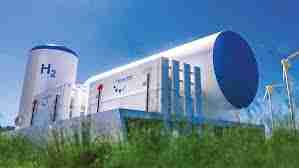The hydrogen storage tank market is witnessing a wave of recent developments as the global energy sector accelerates its pivot toward cleaner alternatives. Hydrogen, known for its zero-emission properties when used in fuel cells or combustion, requires robust and scalable storage solutions. The growing demand for hydrogen in mobility, power generation, industrial feedstock, and long-term energy storage is pushing stakeholders to innovate and evolve. Recent developments in this market—spanning technology upgrades, strategic partnerships, infrastructure rollouts, and government-backed initiatives—are reshaping its dynamics and unlocking new opportunities across global economies.

Technological Advancements in Storage Tank Design
One of the most notable recent developments in the hydrogen storage tank market has been the advancement in tank design and material science. Companies are increasingly adopting Type III and Type IV composite tanks that offer high-pressure tolerance and low weight, ideal for mobility applications such as fuel cell vehicles, buses, and drones.
Breakthroughs in carbon fiber wrapping, resin systems, and leak-proof liner materials have significantly improved tank performance, allowing safe hydrogen storage at pressures up to 700 bar. Some firms are even exploring Type V tanks—non-metallic, liner-less tanks—designed to further reduce weight and boost energy efficiency, particularly for aerospace and advanced transportation.
Rise of Cryogenic and Liquid Hydrogen Storage
Recent innovations also include the development of liquid hydrogen storage tanks that store hydrogen at extremely low temperatures (around -253°C). This method enables higher volumetric density compared to compressed hydrogen, making it suitable for long-range transport and large-scale storage applications.
Major aerospace and marine companies are investing in cryogenic tank technologies to support hydrogen-powered aircraft and ships. The adaptation of double-walled, vacuum-insulated tanks with advanced thermal management systems is among the key developments transforming the landscape of hydrogen storage.
Strategic Collaborations Driving Innovation
The market has seen a surge in strategic collaborations aimed at accelerating innovation and commercialization. Tank manufacturers are partnering with automakers, hydrogen producers, and renewable energy companies to develop integrated hydrogen solutions.
Recent partnerships between storage tank developers and automotive giants have led to the launch of fuel cell vehicles with longer ranges and reduced refueling times. Similarly, collaborations with industrial gas suppliers and energy utilities are facilitating the deployment of hydrogen refueling stations and distributed storage hubs, critical for scaling hydrogen infrastructure.
Government-Backed Projects and Funding Support
In response to climate goals, governments around the world are launching hydrogen strategies and funding programs to accelerate adoption. These initiatives often include direct support for hydrogen storage technologies. For example, national projects in Europe, Japan, and South Korea are funding the deployment of hydrogen storage tanks as part of their renewable integration and energy resilience plans.
The U.S. Department of Energy has also increased funding for R&D in hydrogen storage, with a focus on next-generation tanks for heavy-duty transport. These investments are enabling pilot projects, scaling prototypes, and reducing the time-to-market for advanced tank systems.
Expansion of Hydrogen Refueling Infrastructure
A major recent development is the growing network of hydrogen refueling stations worldwide, which directly supports the demand for mobile hydrogen storage tanks. Countries like Germany, Japan, China, and the U.S. have accelerated the rollout of refueling infrastructure for public transport, passenger vehicles, and logistics fleets.
This expansion is prompting tank manufacturers to design high-throughput systems capable of rapid refueling and safe pressure containment. It’s also leading to the development of standardized tank dimensions and fittings, which will simplify maintenance and improve cross-platform compatibility.
Entry of New Players and Startups
The hydrogen storage tank market has attracted a wave of startups and new entrants, often backed by venture capital and public funds. These players bring fresh perspectives and novel technologies such as modular storage solutions, AI-enabled monitoring systems, and recyclable tank components.
The entry of smaller, agile companies is increasing competition and driving rapid innovation, particularly in niche applications like portable hydrogen systems for emergency power or off-grid installations. Their presence is reshaping the competitive landscape and prompting established firms to evolve faster.
Focus on Sustainability and Recycling
Recent development trends also emphasize sustainability, with growing efforts to make hydrogen tanks more recyclable and environmentally friendly. As the hydrogen economy scales up, managing the lifecycle of tanks becomes essential. Companies are exploring methods to recover and reuse carbon fibers, polymers, and other materials used in composite tanks.
Incorporating eco-design principles into manufacturing and end-of-life handling not only reduces environmental impact but also aligns with global ESG (Environmental, Social, and Governance) goals—enhancing brand reputation and attracting environmentally conscious customers and investors.
Digitalization and Smart Monitoring Integration
Recent innovations include the integration of digital monitoring systems into storage tanks. These smart systems provide real-time data on pressure, temperature, structural integrity, and gas leakage. This development is crucial for improving safety, performance, and compliance—especially in high-stakes environments like aerospace, heavy industry, and transportation fleets.
Companies adopting digital twin technologies and cloud-connected sensors are offering predictive maintenance and enhanced analytics, creating new value propositions and service-based business models.
Conclusion
The hydrogen storage tank market is evolving at a remarkable pace, driven by a confluence of technology, investment, policy, and sustainability trends. Recent developments such as lightweight high-pressure tanks, cryogenic innovations, strategic partnerships, infrastructure expansion, and digital integration are setting the stage for the next phase of growth.
As global economies intensify their commitment to decarbonization, these advancements in hydrogen storage technology will be instrumental in shaping a clean, efficient, and resilient energy future. Companies that align with these trends and continue to innovate will play a leading role in building the global hydrogen economy.




